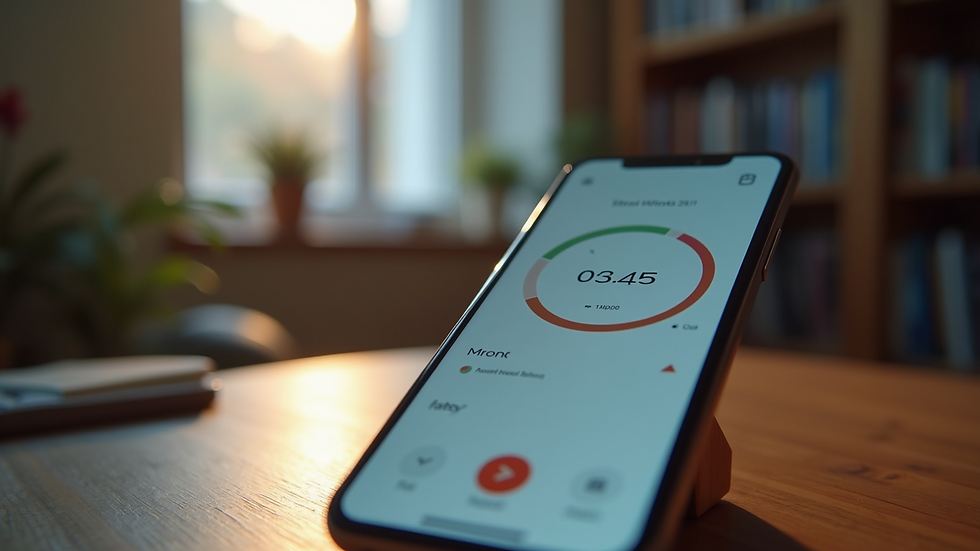Recognizing the Signs: Tools for Understanding Depression
- LeMar Bowers
- Aug 12
- 3 min read
Updated: Aug 14
Depression is a common yet complex mental health condition that affects millions of people worldwide. Recognizing the signs early and understanding the tools available for assessment can make a significant difference in managing the condition effectively. This article explores practical ways to identify depression, introduces useful depression tools, and explains how assessments can help in understanding this condition better.
Understanding Depression and Its Signs
Depression is more than just feeling sad or having a bad day. It is a persistent condition that impacts how a person feels, thinks, and handles daily activities. Recognizing the signs early is crucial for seeking help and starting treatment.
Some common signs of depression include:
Persistent sadness or low mood lasting for weeks or months
Loss of interest or pleasure in activities once enjoyed
Changes in appetite or weight (either loss or gain)
Difficulty sleeping or oversleeping
Fatigue or loss of energy
Feelings of worthlessness or excessive guilt
Difficulty concentrating or making decisions
Thoughts of death or suicide
It is important to note that depression symptoms can vary widely between individuals. Some may experience physical symptoms like headaches or digestive issues, while others may feel emotionally numb or irritable.
Practical Tips for Recognizing Depression
Keep a mood diary: Track your feelings, energy levels, and sleep patterns daily.
Notice changes: Pay attention to changes in behavior, appetite, or social interactions.
Ask trusted friends or family: Sometimes others notice changes before you do.
Seek professional advice: If symptoms persist for more than two weeks, consider consulting a healthcare provider.

Depression Tools: Aiding Early Detection and Management
Depression tools are designed to help individuals and healthcare providers identify symptoms and monitor progress. These tools range from simple questionnaires to digital apps and professional assessments.
Common Depression Tools Include:
Screening questionnaires: Short surveys like the Patient Health Questionnaire (PHQ-9) help identify depression severity.
Mood tracking apps: Mobile applications allow users to log moods, sleep, and activities over time.
Educational resources: Guides and videos that explain symptoms and coping strategies.
Support groups: Online or in-person groups provide community support and shared experiences.
Using these tools can empower individuals to take an active role in their mental health. For example, mood tracking apps can reveal patterns that might otherwise go unnoticed, such as worsening symptoms during certain times of the day or after specific events.
How to Use Depression Tools Effectively
Be consistent: Regular use of tools provides more accurate information.
Be honest: Answer questions truthfully to get the best results.
Combine tools: Use multiple tools for a comprehensive view.
Share results: Discuss findings with a healthcare professional for guidance.

What Assessments Can Be Used for Depression?
Professional assessments are essential for diagnosing depression accurately. They help differentiate depression from other conditions and determine the best treatment approach.
Types of Depression Assessments
Clinical interviews: Conducted by mental health professionals to explore symptoms and history.
Standardized questionnaires: Tools like the Beck Depression Inventory (BDI) or Hamilton Depression Rating Scale (HDRS) quantify symptom severity.
Physical exams: Rule out medical causes of depressive symptoms.
Psychological testing: In-depth evaluations to understand cognitive and emotional functioning.
These assessments provide a structured way to evaluate depression and track changes over time. They are often used alongside self-reported tools to create a full picture of an individual's mental health.
Benefits of Professional Assessments
Accurate diagnosis and differentiation from other disorders
Tailored treatment plans based on severity and type of depression
Monitoring treatment effectiveness and adjusting as needed
Early identification of risk factors such as suicidal thoughts
If you suspect you might be experiencing depression, consider taking a self-assessment for depression online. This can be a helpful first step before seeking professional evaluation.

Practical Steps to Take After Recognizing Depression
Once signs of depression are identified, taking proactive steps is vital. Here are some actionable recommendations:
Reach out for support: Talk to trusted friends, family, or mental health professionals.
Develop a routine: Structure your day with regular sleep, meals, and activities.
Engage in physical activity: Exercise can improve mood and energy levels.
Practice mindfulness: Techniques like meditation and deep breathing reduce stress.
Avoid alcohol and drugs: These can worsen depression symptoms.
Follow treatment plans: If prescribed medication or therapy, adhere to the recommendations.
Remember, recovery is a gradual process. Small, consistent actions can lead to significant improvements over time.
Moving Forward with Awareness and Support
Understanding depression and using the right tools can empower individuals to manage their mental health effectively. Early recognition, combined with appropriate assessments and support, opens the door to healing and improved quality of life.
If you or someone you know is struggling, remember that help is available. Utilizing depression tools and seeking professional guidance can make a meaningful difference on the path to recovery. Stay informed, stay connected, and take the first step toward wellness today.
.png)


Your discussion on the nuances of audience engagement really struck a chord. It's increasingly clear that simply churning out articles without a genuine connection to user intent is a race to the bottom. I've found that truly understanding the 'why' behind a search query, beyond just keywords, is crucial for creating impactful content. However, translating that deep understanding into measurable content performance and tangible ROI can often feel like a guessing game. For those looking to move beyond guesswork and gain clearer digital behavioral impact assessment, exploring robust testing frameworks can make a significant difference.
For a quick mental health check-up, you can't beat the PHQ-9. It's fast, free, and gives you a reliable snapshot of your well-being in the last two weeks.
It's so important that you highlight how depression is 'more than just feeling sad or having a bad day,' but a persistent condition. This distinction is crucial, as the subjective nature of symptoms often makes early self-recognition incredibly challenging, especially when they manifest differently across individuals. While practical tips like mood diaries are helpful, moving from symptom recognition to a more objective assessment of severity often requires a structured approach. For those looking to understand the nuances of this process, exploring a standardized tool for assessing depression severity can provide valuable insights into clinical evaluation methods.